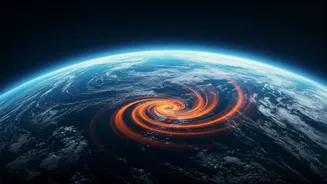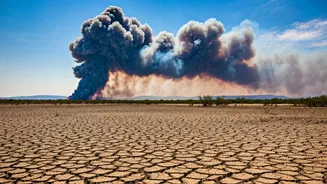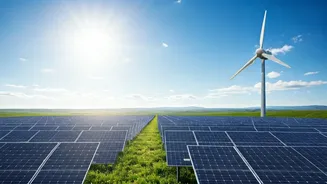An Alarming Increase
The atmospheric concentration of carbon dioxide (CO2) has witnessed its most significant rise on record. This unprecedented increase serves as a stark
reminder of the escalating pace of climate change. The exact magnitude of the surge, the methods employed to measure it, and the potential impact it might have on the Earth's climate system warrant thorough investigation. It's important to recognize that CO2, a major greenhouse gas, plays a crucial role in trapping heat within the Earth's atmosphere. Thus, heightened CO2 levels lead to a warmer planet, bringing about a wide range of climatic changes. Scientists have been consistently monitoring CO2 levels, using sophisticated technology and observing stations scattered globally to track atmospheric composition and changes across time. The information gathered from these stations makes it possible to determine the scale of the rise observed recently.
Sources of the Surge
The principal contributor to the spike in CO2 levels is primarily attributed to anthropogenic activities, or human actions. Burning fossil fuels, like coal, oil, and gas, for energy production is a key driver. Industrial processes also release substantial CO2 emissions. Deforestation adds to the problem by reducing the planet's ability to absorb CO2 from the atmosphere. Consequently, the combination of these activities amplifies the concentration of greenhouse gases. These human-related actions have significantly altered the natural carbon cycle. While natural sources of CO2 exist, such as volcanic eruptions and the decomposition of organic matter, these are considerably smaller in scale compared to the releases triggered by human activities. The massive scale of modern industrial practices and energy consumption has greatly intensified the accumulation of CO2 in the atmosphere.
Impact and Consequences
The upsurge in atmospheric CO2 levels has various serious implications. Increased greenhouse gas concentrations trap more heat, causing global warming, and further exacerbating climate change. This warming trend results in more frequent and intense heat waves, altered precipitation patterns, and rising sea levels. The environmental consequences are numerous, and include melting glaciers and polar ice sheets, which in turn accelerate sea level rise and can result in significant flooding of coastal areas. Changing weather patterns also lead to more severe storms and droughts, affecting ecosystems, agriculture, and water resources. The consequences extend beyond environmental issues to also impact human health, agricultural productivity, and the overall global economy, making understanding the scope of the problem essential to developing effective solutions.
Global Response Needed
Dealing with the escalation of CO2 levels requires a combined global approach. Reducing greenhouse gas emissions is the most crucial step, necessitating a shift away from fossil fuels and towards renewable energy sources such as solar and wind power. Improving energy efficiency in all sectors is also vital, alongside the implementation of stricter emission regulations. Simultaneously, efforts to protect and restore forests, which act as carbon sinks, can help absorb CO2 from the atmosphere. Moreover, technological innovations like carbon capture and storage offer additional opportunities to mitigate emissions. International cooperation and agreements are crucial for achieving meaningful progress, requiring every nation to contribute to the global effort and promote sustainable practices to reduce the impact of climate change.
Long-Term Perspectives
The persistent rise in atmospheric CO2 concentrations presents long-term challenges. Even if emissions are drastically reduced, the effects of accumulated CO2 in the atmosphere will be felt for decades. Consequently, climate change impacts will continue to evolve, requiring adaptation strategies to minimize their effects. Investing in climate-resilient infrastructure is important to protect communities from extreme weather. Furthermore, promoting climate education and awareness helps to inform and empower individuals and societies to take action. The long-term perspectives remind us that addressing climate change is not merely an immediate problem, but an ongoing process demanding unwavering commitment. The strategies developed today will shape the well-being of future generations.













